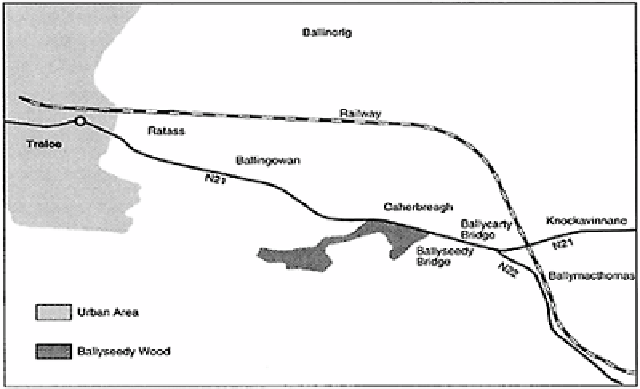Environmental Engineering Reference
In-Depth Information
tests, and demonstrates the high level of protection currently afforded to designated
habitats in the EU (Weston & Smith 1999).
9.4.2
The proposals
Improvements to the N21 main road into Tralee, County Kerry, in the west of Ireland,
had been an objective of the local authority, Kerry CC, since the late 1960s. However, it
was not until the prospect of European funding for these improvements emerged during
the mid- 1990s that substantial progress was made in advancing the scheme. The route
was included in the Irish Government's Operational Transport Programme for Ireland
(OTP) in 1994. In the same year, the OTP was adopted for co-funding by the European
Commission as part of the EU's Community Support Framework for Ireland. Under this
Support Framework, the EU agreed to provide 85 per cent of the funding for the proposed
improvements to the N21 link.
The proposed project comprised improvements to 12.5km of the existing N21
highway between Castleisland and Tralee, including a short (2.4 km) new section of dual
carriageway between Ballycarty and Tralee (Figure 9.3). The dual carriageway section of
the scheme ran to the south of the existing highway and through Ballyseedy Wood, which
was later discovered to be a priority habitat under the EU Habitats Directive. Following
the announcement of European co-funding in July 1994, Kerry CC, as the local highways
authority, began design work on the proposed scheme.
9.4.3
The planning and EIA process
The N21 road improvement scheme was an Annex II project, for which EIA is required
only if there are likely to be significant environmental effects. Like most EU
Figure 9.3
Map of the existing
N21/N22 road network.

Search WWH ::

Custom Search